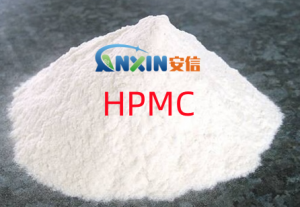Hydroxypropyl Methylcellulose (HPMC) is a non-ionic cellulose ether obtained by chemical modification of natural cellulose. Due to its safety, non-toxicity, and biodegradability, HPMC is widely used in the food industry, becoming an important multifunctional food additive. Food-grade HPMC, in particular, plays an irreplaceable role in modern food formulations due to its excellent physicochemical properties and physiological safety.
1. Basic Characteristics of Food-Grade HPMC
Food-grade HPMC is a white or off-white powder that readily dissolves in cold water to form a transparent, viscous solution. Its main characteristics include:
Excellent water retention and film-forming properties: It can form a dense protective film on the surface of food, preventing moisture loss.
Thermogel properties: It can form a thermogel upon heating and regain fluidity upon cooling, making it suitable for heat-processed foods.
Good emulsifying and suspending properties: It can stabilize oils and aqueous phases, preventing stratification.
Acid and alkali resistance, non-ionic properties: Stable over a wide pH range and unaffected by salts.
Safe and non-toxic: Not digested or absorbed by the human body, it is a purely physical functional additive that meets international food additive standards (such as those approved by FAO, WHO, and FDA).
2. Main Application Areas of Food-Grade HPMC
2.1. Baked Goods
In baked goods such as bread, cakes, and cookies, HPMC can improve the water retention and stability of dough, improve texture, making the product softer and more elastic, and slowing down the aging process. HPMC’s film-forming properties can also reduce oil absorption, helping to produce low-fat or oil-free formulations.
2.2. Plant-Based Meat and Vegetarian Products
HPMC is a commonly used structural modifier and binder in plant-based meat formulations. Its thermogel properties can form a meat-like texture during heating, enhancing elasticity and mouthfeel, and helping plant proteins form a “meaty” texture. Simultaneously, it can also act as a fat substitute, reducing fat content and achieving healthier and more sustainable production.
2.3. Dairy Products and Frozen Drinks
In products such as ice cream, milkshakes, and yogurt, HPMC can prevent ice crystal formation, improve mouthfeel, and enhance emulsification stability. It can be used synergistically with other colloids (such as guar gum and carrageenan) to optimize consistency and smoothness, and reduce stratification or water separation caused by temperature changes.
2.4. Confectionery and Chocolate
HPMC is mainly used as a coating agent and desiccant in confectionery and chocolate. Its excellent film-forming properties effectively isolate air and moisture, extend product shelf life, and impart a glossy appearance. Furthermore, HPMC’s controllable solubility allows for the production of delayed-release coatings.
2.5. Convenience and Frozen Foods
In instant noodles, frozen dumplings, vegetarian meatballs, and other convenience food products, HPMC enhances the elasticity and toughness of these products, preventing breakage and gelatinization during storage or heating. Its water-retaining properties also improve texture, ensuring the food retains a fresh texture after reheating.
2.6. Beverages and Functional Foods
In fruit juices, meal replacement powders, and protein drinks, HPMC acts as a suspending agent and thickener, preventing particle sedimentation and making the beverage smoother and more uniform. Simultaneously, it can also play a role in controlled release, used to encapsulate vitamins or plant extracts, prolonging nutritional activity.
3. Application Advantages of Food-Grade HPMC
High Safety: HPMC is derived from natural cellulose, undergoes rigorous purification and testing, contains no animal-derived components, and meets vegetarian and halal standards.
High Multifunctionality: Integrates water retention, thickening, emulsification, suspension, film formation, and thermogelation, replacing many traditional additives and simplifying formulations.
Good Processing Adaptability: Resistant to high temperatures and acids/alkalis, it does not affect food flavor or color, suitable for various processing environments.
Improved Taste and Texture: Gives food a smooth and delicate texture, increases elasticity and fullness, and enhances the consumer experience.
Extended Shelf Life: Effectively slows down food spoilage through the formation of moisture-proof, moisturizing, and antioxidant films.
In line with health trends: Performs outstandingly in low-fat, low-sugar, vegetarian, and functional food sectors, meeting modern health-conscious consumer demands.
4. Development Trends and Prospects
With the rapid development of plant-based foods, functional health foods, and sustainable formulations, the demand for food-grade HPMC continues to grow. In the future, HPMC will be increasingly used in high-end applications such as replacing animal collagen, improving plant protein conformation, and developing controlled-release nutrient carriers. Furthermore, customized HPMC products for different application scenarios (such as high-transparency, low-viscosity, and instant-dissolving types) will become a research hotspot.
Food-grade HPMC, as a safe, efficient, and sustainable food additive, is transitioning from a traditional thickener to a multifunctional modifier. It not only improves the processing performance and taste of food but also aligns with today’s consumers’ pursuit of “health, natural, and green” products, thus having a broader application prospect in the food industry in the future.
Post time: Oct-30-2025

